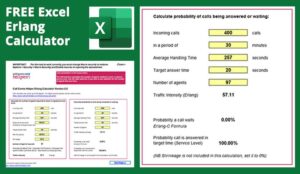Richard Correia discusses how you can better focus your coaching programme to maximize performance improvement.
A typical 500-agent contact centre allocates approximately $2M a year to coaching contact centre agents, but leaders often struggle to measure the ROI of coaching.
With vast amounts of data available from evaluations, third-party assessments, automatic call distributors (ACDs) and more, leaders also find it difficult to understand what they need to focus on to affect their most mission-critical KPIs.
Effective coaching happens when organizations are able to bring together all sources of data to identify agents who need help – and the areas in which they need help – and implement a structured programme to drive improvement.
In most organizations, only a small proportion of people serve as coaches, and those that do often spend just 30 to 40 percent of their time on coaching. With limited time dedicated to coaching, it becomes increasingly important to understand which agents are preventing the organization from reaching its goals.
The first step in effective coaching is to understand all of the factors that influence a KPI. Consider the case of a contact centre supervisor who closely tracks employee engagement. Engaged employees typically contribute about 20 percent more revenue and are 44 percent more productive than employees who are categorized as satisfied, making this an important metric for many contact centres.
The supervisor – let’s call her Donna – is alerted via her performance management solution that employee engagement is trending down. That solution is also able to tell her what might be driving this trend, whether it be sentiment scores, transfer rates, ACD data, revenue for call and more. The KPI is a weighted average of the metrics that affect it.
The next step is for Donna to identify where exactly she needs to focus to address the declining employee engagement. She knows that while progress is measured in goals achieved or KPIs improved, progress happens when behaviours change – that’s why it’s important to coach to behaviours rather than KPIs.
But Donna’s not an analyst; she’s a great supervisor who excels at coaching her teams. She needs to know who and what to focus her coaching on.
She logs in to her performance management solution, which allows her to see which agent (or agents) are most affecting the employee engagement KPI.
Then she is able to look more in detail at that agent’s metrics. The artificial intelligence-powered solution tells Donna what to focus on – the metrics that most influence the KPI.
She can spend the bulk of her time on coaching, rather than on trying to understand where the problem is, and she can see the impact past coaching sessions have had on the agent’s behaviour. The coaching she delivers is now precisely targeted to the behaviours that will drive the improvement she’s looking for – she’s no longer operating in the dark.
Coaching isn’t a one-time event; rather, it’s on ongoing process that develops over time based on who and where the focus needs to drive improvement. Without proper technology and tools in place, valuable coaching time may be lost navigating through a sea of data to determine where problems exist and what improvements need to be made to strengthen KPIs for the team.
By implementing a structured coaching programme, supervisors can get a personalized view of data available on a user-friendly dashboard to help guide them in the coaching process.
Author: Robyn Coppell
Published On: 27th Apr 2020 - Last modified: 29th Apr 2020
Read more about - Guest Blogs, NICE






































